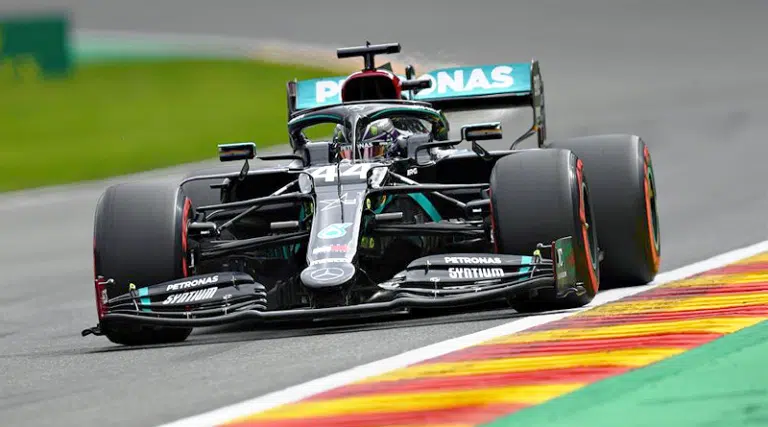Dakar 2025: The operation of the 48-hour stage

The Dakar 2025 is preparing to surprise the world with its 48-hour stage, a challenge that tests the resilience and skills of the competitors. This innovative test, which had its debut in 2024, is now brought forward on the calendar, generating an atmosphere full of tension and strategy. With a timed route covering impressive distances of 947 km for motorcycles and 967 km for other categories, the riders will be immersed in a stubborn confrontation where the lack of assistance will be a decisive factor, elevating the level of adrenaline and excitement with every kilometer covered. Prepare to experience one of the most exciting stages in rally history.
The 48-hour stage of the Dakar is one of the most daring challenges of the competition, promising to test the endurance and strategy of the participants. Confirmed for Dakar 2025, this stage will take place in a format that will increase adrenaline and excitement, dividing competitors between those who manage to adapt to extreme conditions and those who struggle to survive the adventure. Next, we will explore how this innovative stage works and what distinguishes it from other race formats.
Innovation in the route
The 48-hour stage was introduced in 2024 and has become a milestone within the editions of the Dakar. For 2025, this stage will take place on the most critical days of the competition, where riders must cover an impressive timed distance of 947 km for motorcycles and 967 km for other categories. This challenging stretch is designed to test not only speed but also the mental endurance of each competitor, who must maintain concentration throughout days that can feel eternal.
No assistance: a true challenge
A distinctive element of the 48-hour stage is the absence of intermediate assistance. This means that competitors will have to manage on their own. Upon reaching the rest point, they will not be able to rely on their team’s help to repair their vehicles, which means that any adjustments or repairs must be done with what they carry with them. This condition adds an additional layer of complication, where improvisation skills and prior preparation play a crucial role.
Unexpected challenges
Every year, the Dakar presents surprises, and the 48-hour stage is no exception. Without assistance, even the smallest mistakes can result in big problems. For instance, the famous driver Carlos Sainz experienced a sports accident in 2024 that put his career at risk. Such events are constant reminders that a small oversight can mean the difference between the podium and withdrawal.
Mental and physical preparation
According to motorsport experts, such as Pierre Dupasquier and Jean-Louis Moncet, the 48-hour stage requires not only technical skill but also intense mental and physical preparation. The riders must be able to overcome exhaustion and pressure, as well as manage the stress that comes with such a competition. Every kilometer counts, and every decision can be decisive in the unfolding of the stage.
The competition atmosphere
The atmosphere during the 48-hour stage is electrifying. The vehicles and their drivers face varied terrains and climates that range from shifting dunes to arid deserts. Strategy and speed intertwine, creating a dance between technique and survival that is unique to this test. The excitement intensifies with every curve, and Dakar enthusiasts can expect an unparalleled spectacle.
For more information on other details and tips surrounding Dakar 2025, including analysis and updates, you can explore other related articles, such as Kove 450 Rally Standard, iconic motorcycles in history, Julien Dalbec heading to Dakar, Sainz’s farewell, and Sanders in the lead.
The 48-Hour Stage of Dakar 2025: A Monumental Challenge
The 48-hour stage in Dakar 2025 marks a new milestone in the world of rallies, presenting an unprecedented challenge for the participants. This innovative section not only tests the resilience of the competitors but also elevates the pressure to the maximum, becoming a true test for vehicles and drivers.
The fact that drivers do not have intermediate assistance during this stage adds an additional level of challenge. Each rider must be able to manage their own team and make improvised repairs with the materials they can carry, forcing them to be resourceful and think quickly in crisis situations.
The distance to be covered, which hovers around 947 km for motorcycles and 967 km for other vehicles, tests not only the technical skill of the riders but also their mental and physical preparation. This component, which may surprise many, highlights how any mistake can have devastating consequences. This was exemplified by the recent incident of Carlos Sainz, who suffered a rollover that prevented him from continuing without immediate assistance.
As the race dates approach, interest in the 48-hour stage grows exponentially. This novel approach is sure to attract a larger number of spectators and followers of the sport, as it adds a layer of drama and excitement that intertwines with the history of the Dakar. With each passing year, the Dakar not only seeks to challenge its competitors but also to create memorable moments that will be etched in the memory of all motorsport lovers.





